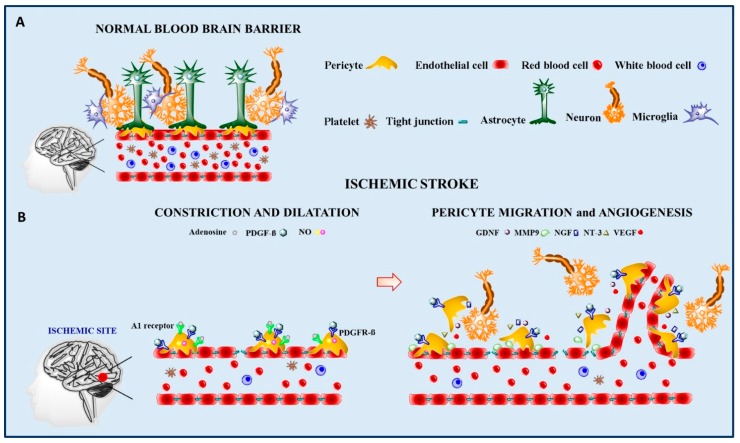Figure 1.
Schematic model of the blood brain barrier (BBB) in physiological conditions (A) and following ischemic damage (B). In the absence of any insult, the BBB is a highly organized structure, composed of different cellular types that cooperate to protect neurons from external agents circulating in the blood (A). In the presence of stroke, pericytes play a key role in restoring blood flow, by synthesizing different molecules involved in microvascular dilatation, new vessel formation and neuroprotection (B). A1 adenosine receptor (A1 receptor), adenosine, platelet-derived growth factor-B (PDGF-B), platelet-derived growth factor receptor-β (PDGFR-β), nitric oxide (NO), glial cell-derived neurotrophic factor (GDNF), matrix metallopeptidase 9 (MMP9), nerve growth factor (NGF), neurotrophin-3 (NT-3), and vascular endothelial growth factor (VEGF).

